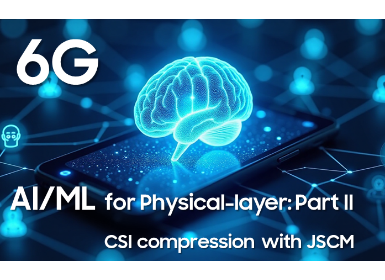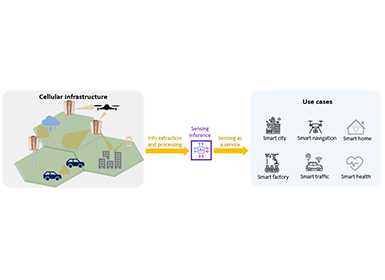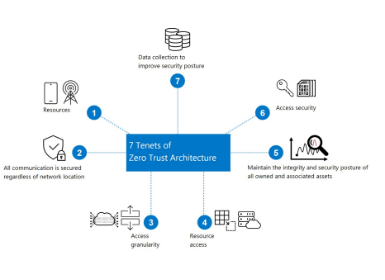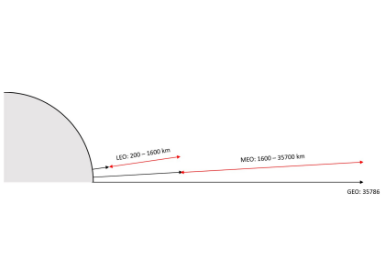Communications
Compute Platform Considerations for 6G vRAN
Virtualised Radio Access Network (vRAN) is gaining significant traction in the telco world as 5G deployments are burgeoning by the day. Typically, in traditional RAN deployments, custom hardware played a significant role in realising the desired performance. The use of COTS (Commercial-Off-The-Shelf) server based vRAN provides the much desired flexibility and scalability along with lower TCO (Total Cost of Ownership) for the operators. While vRAN is on its path to maturity for 5G, it may not be so impractical to assume that vRAN is going to be the de-facto choice of deployment right from the start of 6G. In this article, we discuss the various types of processing needs that 6G vRAN presents along with the state-of-the-art compute technologies available to cater to them and analyse if evolutionary advancements will be enough to meet the 6G computation requirements.

Figure 1. Traditional non-virtualised RAN vs virtualised RAN
A typical deployment comparison of traditional non-virtualised RAN vs virtualised RAN is illustrated in the Figure 1 above. vRAN comprises of the Radio Layers of Mobile Network that are further referred to as L1 (Physical Layer), L2 (Data Link Layer) and L3 (Radio Resource Control Layer). L1 requires extremely compute intensive mathematical operations those typically involve matrices and complex numbers. It is to be noted that the entire Layer 1 processing is ‘Real Time’ in nature that, it should be completed in a specific time period, which otherwise leads to data loss or corruption and deteriorated user experience. L2 comprises of heavy duty packet processing that has elements of both types of ‘Real Time’ (operations to be completed in specific time duration) and ‘Non Real Time’ (operations that do not require to be completed in a specific time duration) functionalities. In addition, L2 also has both ‘state-less packet processing’ and ‘state-based packet processing’. L3 comprises of purely ‘Non Real Time’ state-based functionalities that have more latency tolerance. Furthermore, the emergence of application of AI in wireless networks also places yet another consideration on the design of vRAN systems. The compute platform chosen for vRAN should as well be conducive for AI that more often than not entails heavy tensor based operations, as a slew of AI based algorithms and novelties are expected to find a prominent place in the vRAN products of the future. The various types of functionalities in vRAN are summarized below:
1. State-based:Execution logic is based on ‘System States’ implying that it is dependent on past outcomes eg. RLC
(Radio Link Control) Window Management
2. Stateless: Execution logic is not dependent on ‘System States’ that is it is not dependent on any past information.
Eg. Packet Header Parsing
3. Vector: Complex numbers based Vector/Matrix computations. Eg. Channel Equalisation
4. Intensive Real Time: Huge amount of compute required in desired time duration. Eg. LDPC decoder
5. Tensor: Generalised multidimensional arrays based operations. Eg. Neural Nets
Industry today has a choice of platforms designed for 5G vRAN that are based on the advanced RISC (Reduced Instruction Set Computer) and CISC (Complex Instruction Set Computer) multi-core CPUs along with a variety of packet accelerators, Intelligent/Smart-NICs (Network Interface Card), Vector Processors, GPUs (Graphic Processing Unit), and FPGAs (Field Programmable Gate Arrays) to cater to the varying processing needs of vRAN. Each of these processing technologies are designed to cater to a specific type of computation need as summarized in the list below:
1. RISC Processors: One Instruction One Job. Typically used for optimised power efficiency.
2. CISC Processors: One Instruction Multiple Jobs. Typically used for optimised code size.
3. Smart-NICs: Embedding programmable compute & accelerators in the NICs. This enables faster execution of certain types
of workloads while enabling general compute offload from host processors.
4. Vector Processors: Utilising single instruction to process multiple data thereby increasing performance.
5. GPUs: Set of specialised cores typically suited for operations on multi-dimensional arrays.
6. Accelerators: Fixed silicon logic that are typically used for high performance computational needs.
7. FPGAs: (Re-) Programmable silicon logic that are typically used for high performance applications
(eg. Custom Accelerators) that cannot be met with general SW implementations.
The Table 1 below provides a suitability mapping between the types of computation to the kind of processing technology that is best match for it.

Table 1. Mapping table of functionality vs compute tech
A careful mapping of the functionality to the type of compute technology is inevitable as besides ‘suitability’ there are the trade-offs of ‘power consumption’, ‘performance’ and ‘cloud friendliness’ that enforce the vRAN designers to walk a tight rope on extracting the maximum compute at an optimal power consumption while maintaining desired scalability and flexibility. The Figure 2 below depicts the trade-off in Power Consumption, Performance and Cloud Friendliness across the various types of compute technologies.

Figure 2. The trade-offs across various computing technologies
*Power consumption and performance are considered for the case where the same clock frequency is applied over a fixed time duration across different compute types. In such cases, power consumed is proportional to the silicon area, whereas performance in TOPS is proportional to the amount of parallelism possible.
**Ordering is based on one unit of the typical configuration available today for each compute type.
While the current state-of-the-art vRAN platforms are still evolving to cater to the needs of full-blown 5G vRAN, it may take a few years before 5G vRAN becomes popular across large-scale deployments. In the meantime the wireless industry has already geared up to start the road to 6G that, will usher in a new era in wireless communications by making a quantum leap from what 5G is able to provide us today, and redefining the way humanity will communicate in the 2030s. All of this will be made possible by the RAN & NW technologies that will be designed to meet to the massively high 6G requirements.
The key factors that will lead to multiple orders of magnitude changes in the compute requirement for 6G are:
- High Throughput & Shorter Sub-frame: Massive increase in the number of packets to be processed per sub-frame while
the duration of the sub-frame is itself considerably reduced
- Higher Carrier Frequency & High Bandwidth: Significant increase in Physical Layer complexity
- Native AI: Substantial usage of AI across all the radio layers in the system
With the vRAN compute platforms still emanating to address the max 5G requirements, it is imperative considering the many orders of magnitude jump in the compute requirements from 5G to 6G (though are of similar processing types as for 5G) that a massively scaled heterogeneous platform will be required to meet the 6G requirements. However, considering that the 6G era will be a fully cloud-native era for the telecom industry, this massively scaled platform for 6G vRAN, without a doubt needs to be fully cloud-friendly while being power efficient to the desired level. Considering the need of such a varying array of heterogeneous technologies to meet the compute requirements of 6G, it is important that various types of compute techs like CPUs, GPUs, Smart-NICs etc. do not evolve independently rather a holistic evolution of all the needed compute techs is strongly desired to create a highly capable yet power efficient 6G vRAN platform.
With the vast advancements needed in the compute technology to meet the 6G requirements, it is vital that at this juncture, the compute industry and the wireless industry need to join hands in co-creating 6G. Such that 6G is designed, with the compute architectures of the future in consideration while the compute platforms of the future are designed considering the requirements of 6G right from the start, as 6G shall be virtualised and cloud-native from day one unlike the transition from non-virtualised to virtualised that 5G is witnessing today.
Disclaimer: The views and opinions expressed in this article are solely those of the authors. These do not necessarily represent those of Samsung Research and its affiliates.






